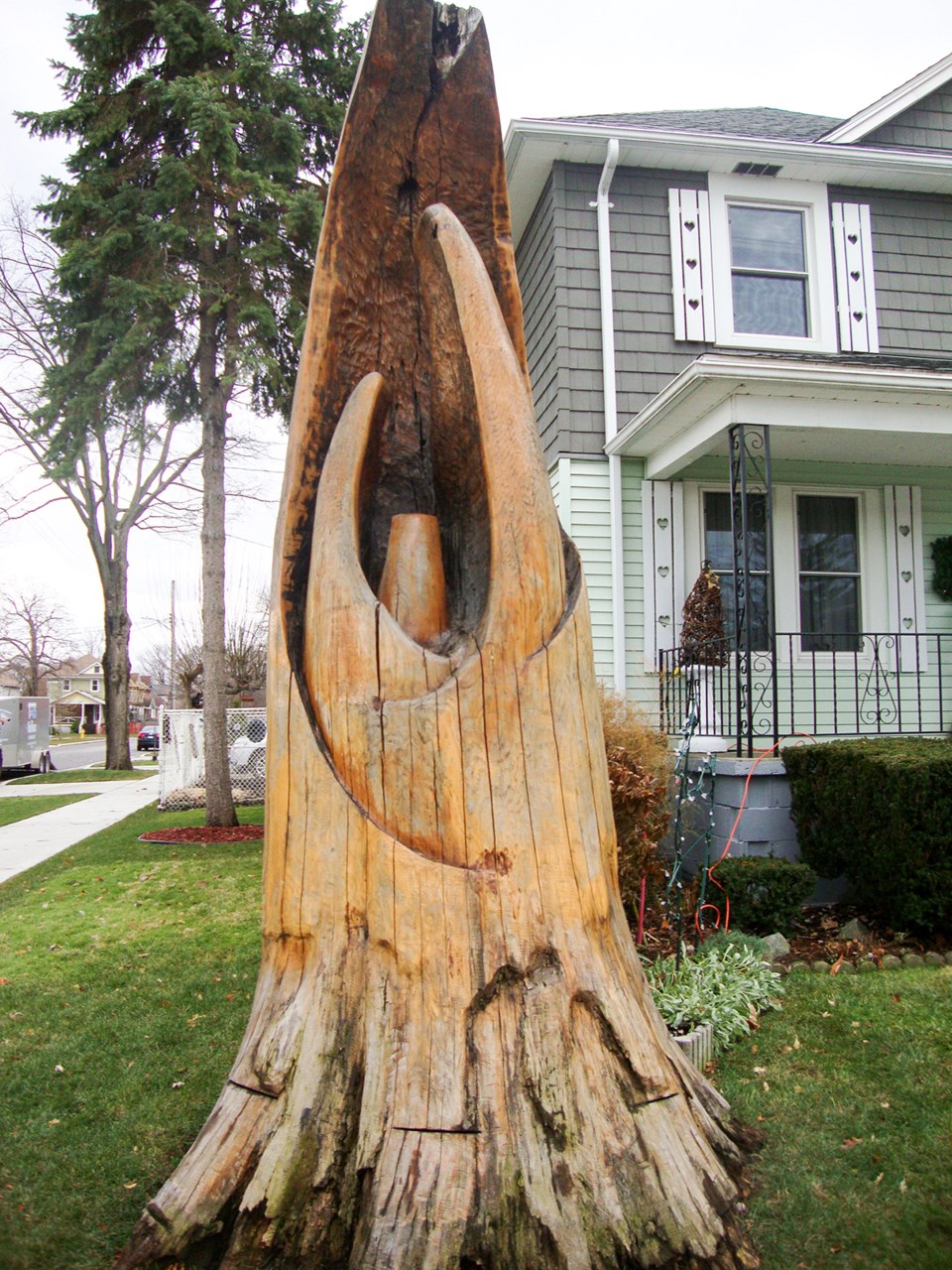 My wife Laurie and I were driving around the south end on the weekend, near the house I lived in as a child.
My wife Laurie and I were driving around the south end on the weekend, near the house I lived in as a child.
Halting for a stop sign at the corner of Richard and Stuart streets, Laurie suddenly exclaimed, “Oh Phil, look at that incredible nativity scene!”
I peered out the passenger side window. All I could see was a dead tree stump. We parked and got out for a better look.
It took me a few moments but then I saw it too: figures carved in the wood representing a man and woman protecting a small figure between them.
Noticing strangers on her front lawn brought out the homeowner, Mary Cahill Turner. She told us the sculpture is the work of local artist Shawn McKnight, who carved it after a storm destroyed most of the tree 17 years ago.
Mary said it depicts “Mother Nature.” But to me, it’s clearly a nativity scene.
An image of the Holy Family in a tree stump also reminded me of the Christian legend that claims every tree in the world blossomed with joy and bore fruit the night before the birth of Jesus.
In ancient times, coniferous trees were imbued with mystical powers because they stayed green, the colour of hope, while others around them seemed to lose life.
Another legend has it that German cleric Martin Luther was the first to cut one down and bring it inside. Luther was reputedly struck by the beauty of evergreens while walking through the forest on a starlit night.
The custom became immensely popular in Germany.
In 1840, Queen Victoria married Prince Albert, a member of the German royal family. He’d grown up decorating Christmas trees and brought the custom to Britain. An image of the royal family celebrating Christmas at Windsor Castle with a large Christmas tree circulated widely in magazines of the day.
After Charles Dickens penned “A Christmas Tree” in 1850 the custom of dragging evergreens into the home for the holiday exploded.
I would have guessed as the Baby Boom generation ages the use of artificial trees would grow —but I’d be wrong. Despite the passage of 170 years, the custom of a fresh-cut Christmas trees is stronger than ever.
Shirley Brennan, executive director of the Christmas Tree Farmers of Ontario, said recently sales have increased 20% annually for the past five years.
Christmas trees recall happy family memories, but sometimes even a dead tree can remind us of the joys of Christmas.
